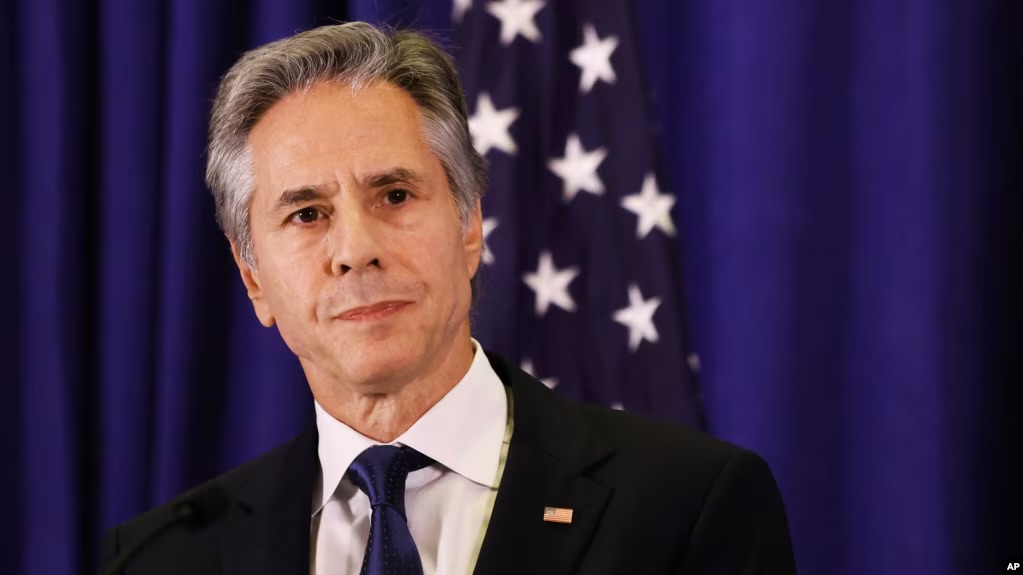This week, U.S. Secretary of State Antony Blinken will travel to Vientiane, Laos, to attend the annual Association of Southeast Asian Nations (ASEAN) summit. This visit comes at a crucial time, as the Indo-Pacific faces rising geopolitical challenges. Blinken will represent President Joe Biden and engage with newly elected leaders from the region on key issues like security, trade, and regional conflicts.
ASEAN Summit and the Indo-Pacific Focus
Blinken will attend the ASEAN-U.S. Summit and the East Asia Summit, two critical meetings where leaders from major Indo-Pacific countries gather. These include representatives from India, Japan, South Korea, and China, among others. The summit provides a platform for discussions on pressing issues affecting the region, including the South China Sea, the crisis in Myanmar, and Russia’s ongoing war against Ukraine.
According to the U.S. State Department, Blinken’s agenda will also include addressing violations of international law in the South China Sea, an area contested by several nations, including China and Vietnam.
Crisis in Myanmar Looms Large
One of the main concerns Blinken will raise is the ongoing crisis in Myanmar, also known as Burma. Since a military coup in 2021, the country has been plunged into violence, with the military junta cracking down on protests and opposition. Elections are planned for next year, but the U.S. is wary of these developments.
“We remain deeply concerned by the regime’s stated plans to hold elections,” said Daniel Kritenbrink, the assistant secretary of state for East Asian and Pacific affairs. The U.S. believes elections in Myanmar under current conditions would only worsen the violence and chaos. The country has been in turmoil since the military took power, and peace seems far away.
New Faces at the Summit
This year’s ASEAN summit will also see new leaders from across Southeast Asia. Thailand’s new prime minister, Paetongtarn Shinawatra, 38, is making her debut at the summit. She took office in mid-August and is the youngest leader among the ASEAN members. She has already scheduled her first bilateral visit to Laos ahead of the summit.
In Singapore, Lawrence Wong recently succeeded longtime Prime Minister Lee Hsien Loong, signaling a generational shift in leadership. Japan also has a new prime minister, Shigeru Ishiba, who took office on October 1. Ishiba has already expressed his desire to strengthen Japan’s alliance with the U.S. and plans to meet Blinken during the summit.
U.S. Aims to Bolster Regional Trade
Another top priority for Blinken during the ASEAN summit will be strengthening trade ties between the U.S. and Southeast Asia. In 2023, trade between the U.S. and ASEAN countries totaled $395.9 billion. The U.S. remains ASEAN’s second-largest trading partner, after China. This shows how vital the region is for the U.S. economy, and both sides are keen to maintain strong trade relations.
The U.S. is also the largest source of foreign investment for ASEAN, with $74.3 billion invested last year. Building resilient supply chains for important industries, such as semiconductors, is another focus of Blinken’s discussions at the summit. The U.S. hopes to secure long-term partnerships to ensure stable supplies of these critical components.
Global Conflicts Add Tension to Talks
Apart from regional issues, Blinken and other leaders will also discuss broader global conflicts. The war in Ukraine, sparked by Russia’s invasion, will be high on the agenda. Russia is sending Foreign Minister Sergey Lavrov to represent the country at the East Asia Summit, and discussions about Moscow’s aggressive actions are expected to be tense.
The Middle East is another flashpoint, with recent escalations in violence raising concerns among the ASEAN nations. The East Asia Summit will bring together 18 countries, including the U.S., China, Russia, and India, to discuss these and other pressing issues.
Challenges in ASEAN Unity
Despite the importance of the summit, some experts are skeptical about how much progress will be made on key issues. Susannah Patton, director of the Southeast Asia Program at the Lowy Institute, expressed doubts about significant breakthroughs. “The ASEAN show will come to Laos and then roll on again,” Patton wrote in a recent analysis, suggesting that many of the pressing issues might remain unresolved.
She also pointed out that political polarization among ASEAN’s dialogue partners, such as the U.S., China, and Russia, makes it difficult for the group to issue strong joint statements on global challenges.
Strengthening U.S. Alliances in the Region
One of Blinken’s goals at the summit will be to reinforce the U.S.’s alliances in Southeast Asia and the Indo-Pacific region. As tensions rise with China, maintaining strong ties with countries like Japan and South Korea becomes more important. Japan’s new prime minister, Shigeru Ishiba, has already pledged to strengthen his country’s alliance with the U.S.
The U.S. and Japan have long been strategic allies, and Blinken hopes to build on that relationship at the summit. South Korea’s President Yoon Suk Yeol is also expected to meet with Ishiba and Blinken on the sidelines of the summit, underscoring the importance of cooperation among U.S. allies in the region.
Looking Ahead
As the summit approaches, Blinken’s trip to Laos is seen as a key moment for U.S. foreign policy in the Indo-Pacific. With new leaders in place and regional tensions rising, the outcome of this year’s ASEAN-U.S. Summit and East Asia Summit will have lasting impacts on the region’s political and economic landscape.
This week’s meetings will be closely watched by leaders worldwide, as Blinken works to address both regional challenges and global conflicts. Whether it’s trade, security, or diplomacy, the stakes are high, and the world is paying attention.

